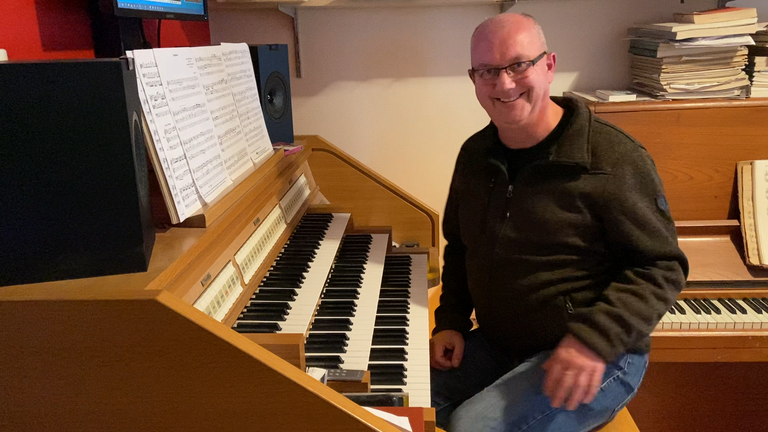Wilhelm Karges (1613 or 1614 – 1699), was a German organist and composer in the North German organ tradition. He was born in Berlin, where he spent much of his life. In January 1646 he was appointed chamber musician and composer at the court of the Elector Friedrich Wilhelm of Brandenburg in Berlin, and subsequently became organist at the cathedral there. Three of Karges compositions can be found in manuscript Am.B. 340., available as digital copy at the Staatsbibliothek zu Berlin. This manuscript contains some 45 organ pieces, presumably copied by Wilhelm Karges.

The composers in this manuscript are sometimes given with there initials, but most pieces remain anonymous in the manuscript. It is a fascinating manuscript, because it gives us some insight in the practical sides of Karges' duty as organist: pieces cannot be longer than two facing pages (to avoid awkward page turns), have a certain length in time (three or four minutes), and some pieces have handy indications where to perform a repeat so the length of the piece can be varied if need be. Where compositions are fomr other sources known to be comp-o0sed by someone else than Karges, they are almost all to some extend adapted. Sometimes Karges only uses a part of the compositions, sometimes he uses two different compositions to create one new one, sometimes he splits up one composition into two or even three seperate pieces. Sometimes he merely copies the original material, sometimes he mixes to more or less extend with music of his (presumably) own invention. Compositions of which no other original is known are either composed by Karges, or are adaptations of compositions of which the original is now lost and we have no way of knowing how much of the music is Karges' and how much of the unknown original composer.
The manuscript has all the apprearances of a practical organists organ book. Today I publish Karges' adaptation of Johann Jacob Froberger's Canzona, FbWV 303. Where the original consists of three sections, Karges uses only two of them. And he notates a repeat in the second section that is not present in Froberger's original. And after the second section he wrties not one, but two different short codas to the piece. And the total piece is written on two facing pages in the manuscript so the player does not have to turn the page while playing. The repeat and the two different codas make it possible to vary the length of the playing and match it to the need of the actual moment.
If you play this piece don't expect to play something by Froberger. You're playing a piece that is very practical for use in service and can be adapted to the organist's needs even while playing. Need a hort piece? Just play the first section and add perhaps one of the coda's. Need a longer piece? Play both sections, the second one without the repeat? Need an even longer piece? Play the repeat of the second section as well. Need an even longer piece than that? PLay the longest coda as well and embellish the chords with some scales or broken chords of you invention. Or just return to the first section and then play a coda.
The recording was done with the Hauptwerk software and the sampleset, made by Sonus Paradisi, of the Hinsz organ in the Reformed church in the Midwolda . I iplay both sections, include the repeat of the second section and play the second (longest) coda.
Score available here: http://partitura.org/index.php/wilhelm-karges-johann-jakob-froberger-capricio-in-f



